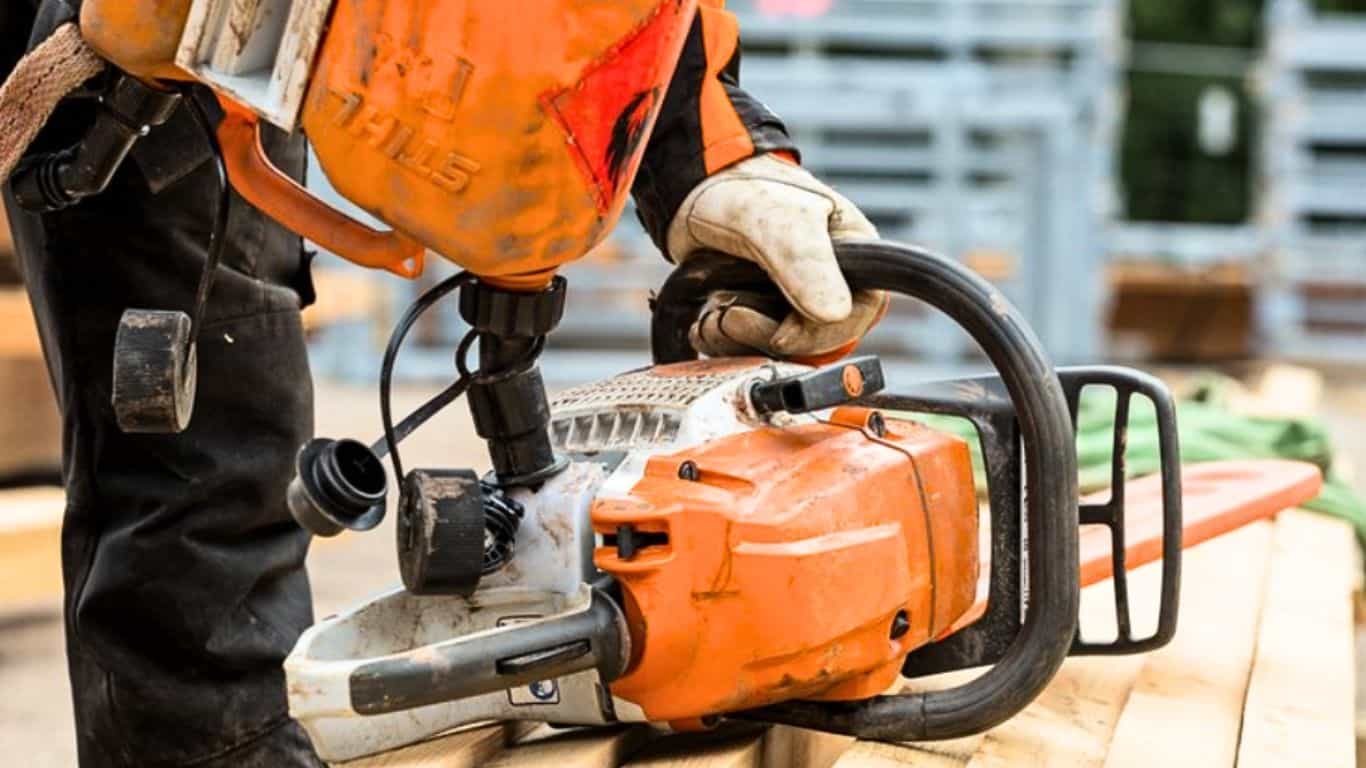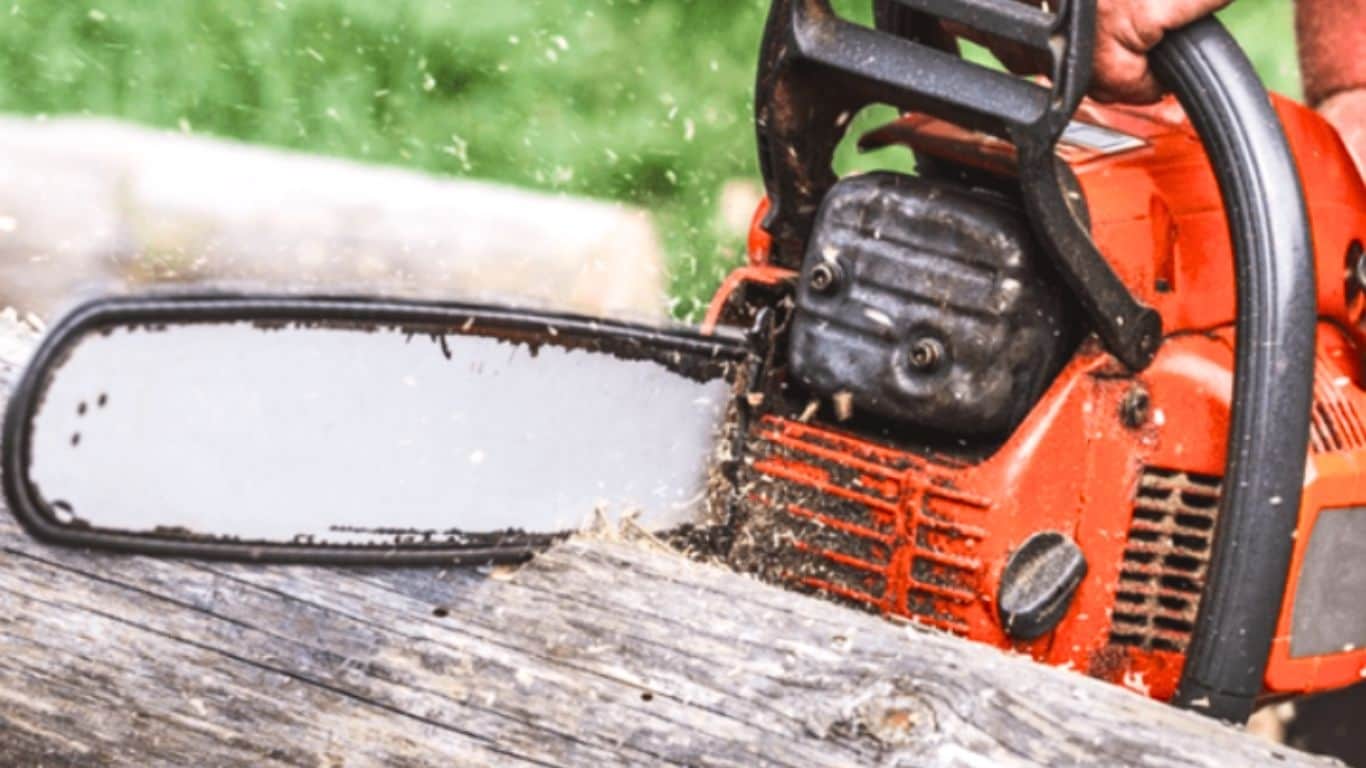Chainsaws are powerful tools that can make tough-cutting jobs a lot easier. But like any machine, they require proper maintenance and fuel to run efficiently. One of the key questions that people often have is whether or not chainsaws take mixed gas. In this article, we’ll explore the topic in detail.
What Oil to Mix with Gas for Chainsaw?
When it comes to mixing gas and oil for a chainsaw, it’s important to use the right type of oil. Most chainsaws are 2-stroke engines, which means they require a mixture of gas and oil to run properly. The oil you choose should be specifically designed for 2-stroke engines and have a high-quality synthetic or mineral oil base.
One of the most common types of 2-stroke oil used for chainsaws is a mixture of petroleum-based oil and synthetic oil. This type of oil provides excellent lubrication and protects the engine from wear and tear.
Chainsaw Gas Mix 50:1
The fuel mix for a 2-stroke chainsaw typically consists of gas and oil in a specific ratio. The most common ratio is 50:1, which means you’ll need to add 2.6 ounces of oil for every gallon of gas. Some chainsaws may require a different ratio, so it’s important to check the owner’s manual to ensure you’re using the correct ratio.
Chainsaw Gas Mix 40 to 1
Another common ratio for chainsaw fuel mix is 40:1, which means you’ll need to add 3.2 ounces of oil for every gallon of gas. This ratio is often used for older chainsaws that have a less advanced design and require a higher oil-to-gas ratio for proper lubrication.
What Kind of Fuel Should I Use in My Stihl Chainsaw?
Stihl is a popular brand of chainsaw, and like other chainsaws, it requires a fuel mix of gas and oil. Stihl recommends using a high-quality 2-stroke oil with a minimum octane rating of 89. The fuel mix ratio for Stihl chainsaws is typically 50:1, but it’s important to check the owner’s manual to ensure you’re using the correct ratio.

How to Mix Chainsaw Gas
Mixing chainsaw gas is a relatively simple process, but it’s important to get the ratio right to ensure proper lubrication and prevent engine damage. To mix chainsaw gas, you’ll need to:
- Determine the correct ratio for your chainsaw by checking the owner’s manual.
- Measure the amount of gas you need and pour it into a gas can.
- Add the appropriate amount of 2-stroke oil to the gas can.
- Close the gas can and shake it thoroughly to mix the gas and oil.
Best Chainsaw Fuel Mix Ratio
The best chainsaw fuel mix ratio depends on the specific chainsaw you’re using. In general, newer chainsaws with more advanced engine designs can use a lower oil-to-gas ratio, such as 50:1. Older chainsaws may require a higher ratio, such as 40:1. It’s important to check the owner’s manual to ensure you’re using the correct ratio for your chainsaw.
Do All Chainsaws Use Mixed Gas?
Not all chainsaws use mixed gas. Some newer chainsaws have advanced engine designs that use a separate oil reservoir for lubrication, eliminating the need for a gas and oil mix. However, most chainsaws still require a fuel mix of gas and oil to run properly.
So, I can say that chainsaws do take mixed gas, but it’s important to use the correct type of oil and mix the gas and oil in the appropriate ratio for your specific chainsaw. Always refer to the owner’s manual for guidance on the correct fuel mix ratio and type of oil to use. By following these guidelines, you can ensure your chainsaw runs efficiently and effectively for years to come.
How to Mix Chainsaw Gas, Step-by-Step
Mixing gas for your chainsaw is an essential task that must be done correctly to ensure your chainsaw runs smoothly and efficiently. The gas you use must be mixed with the right amount of oil to lubricate the engine and prevent it from overheating or getting damaged. In this guide, we’ll walk you through the process of mixing chainsaw gas step-by-step.

Step 1: Determine the Right Fuel Mix Ratio
Before you start mixing the gas, you need to determine the right fuel mix ratio. The fuel mix ratio refers to the amount of oil you need to mix with one gallon of gas. The most common ratio is 50:1, which means you need to mix 2.6 ounces of oil with one gallon of gas. However, some chainsaws may require a different fuel mix ratio, so it’s crucial to check your chainsaw’s manual for the right ratio.
Step 2: Gather Your Supplies
Once you have determined the right fuel mix ratio, you need to gather your supplies. You will need a gas can, a measuring cup or container, and 2-stroke oil designed for chainsaws. It’s essential to use the right type of oil for your chainsaw to ensure the engine runs smoothly and stays lubricated.
Step 3: Measure the Gas
Next, measure the amount of gas you need. If you plan to mix a small amount of gas, you can use a measuring cup, but if you need to mix a larger amount, use a gas can with a clear indicator to make it easier to see the level of gas.
Step 4: Add the Oil to the Gas
After measuring the gas, add the appropriate amount of oil to the container. For example, if you’re using a 50:1 ratio, you should add 2.6 ounces of oil per gallon of gas. If you’re unsure about the amount of oil to use, refer to your chainsaw manual.

Step 5: Mix the Gas and Oil
After adding the oil to the gas, it’s essential to mix the gas and oil thoroughly. Close the gas can and shake it vigorously for at least 30 seconds to ensure the gas and oil are mixed completely. It’s important to mix the gas and oil well to prevent engine damage and ensure optimal performance.
Step 6: Label the Gas Can
Finally, it’s important to label the gas can with the fuel mix ratio, date, and type of oil used. This information will come in handy when you need to refill your chainsaw later. It’s also essential to store the gas can in a safe place away from heat sources and flammable materials.
In conclusion, mixing chainsaw gas is a relatively simple process that requires careful attention to detail. By following these steps, you can ensure your chainsaw runs smoothly and efficiently for years to come. Remember to always check your chainsaw manual for the correct fuel mix ratio and type of oil to use.
What Happens If I Put Raw Gas in a Chainsaw?
Putting raw gas in a chainsaw is a common mistake that many people make, especially if they’re not familiar with chainsaws or don’t understand the importance of mixing gas and oil. Raw gas refers to gasoline that hasn’t been mixed with oil, and if you put raw gas in a chainsaw, it can cause serious damage to the engine.
Chainsaws are designed to run on a fuel mix of gasoline and oil. The oil in the fuel mix lubricates the engine, reducing friction and preventing overheating. If you put raw gas in a chainsaw, the engine will not be lubricated properly, which can cause it to overheat and seize up.
Overheating can also cause the piston and cylinder to expand at different rates, leading to warping or even cracking. This damage is usually permanent and can be expensive to repair or replace.

In addition to engine damage, putting raw gas in a chainsaw can also cause starting problems. The engine may be flooded with too much gasoline, making it difficult or impossible to start. The spark plug may also get fouled with gasoline, which can cause the engine to misfire or not start at all.
If you accidentally put raw gas in your chainsaw, the best course of action is to drain the tank and refill it with the proper fuel mix. If you’re not sure how to do this, consult your chainsaw manual or take it to a professional for servicing.
In conclusion, putting raw gas in a chainsaw can cause serious damage to the engine and should be avoided at all costs. Always make sure to mix the gas and oil properly according to the manufacturer’s instructions, and never put raw gas in your chainsaw.
What Happens If You Don’t Mix the Gas with Oil?
If you don’t mix gas with oil before using it in a chainsaw that requires a fuel mixture, it can have severe consequences for the chainsaw’s engine. Chainsaws are typically two-stroke engines, which means they require a mixture of gasoline and oil for proper lubrication and cooling.
If you use straight gasoline (without oil) in a chainsaw that requires a fuel mixture, several issues can arise:
- Insufficient Lubrication: The primary purpose of mixing oil with gasoline is to provide lubrication to the internal components of the engine. The engine lacks proper lubrication, leading to increased friction, heat, and wear. This can result in damage to the piston, cylinder, crankshaft, and other moving parts.
- Overheating: The oil in the fuel mixture also helps dissipate heat generated by the engine. Without the cooling properties of the oil, the engine can overheat rapidly, potentially causing the warping or seizing of critical components.
- Engine Damage: Insufficient lubrication and excessive heat can cause significant damage to the engine. The piston may seize, the cylinder walls may become scored or damaged, and other internal components can suffer wear or failure. These issues often require costly repairs or even the replacement of the entire engine.
- Poor Performance and Starting Issues: Using straight gasoline can lead to poor engine performance. The chainsaw may experience reduced power, inefficient fuel combustion, and difficulties starting. The spark plug can become fouled, resulting in misfires or the engine not starting at all.
Do Chainsaws Take Mixed Gases – FAQs
Conclusion
It is important to follow the manufacturer’s guidelines and mix the gas and oil in the recommended ratio specified in the chainsaw’s manual. This ensures proper lubrication, cooling, and overall performance of the chainsaw while maximizing its lifespan.
If you accidentally use straight gasoline in a chainsaw that requires a fuel mixture, it is advisable to drain the tank and fuel lines completely. Refill the chainsaw with the correct fuel mixture according to the manufacturer’s instructions before attempting to use it again. If you are unsure or concerned about any damage, it is recommended to have the chainsaw inspected by a professional before operating it.



![Are Craftsman Power Tools Good? [All About Craftsman] Are Craftsman Power Tools Good? [All About Craftsman]](https://chainsawreviewsblog.com/wp-content/uploads/2022/04/Are-Craftsman-Power-Tools-Good-All-About-Craftsman.png)
